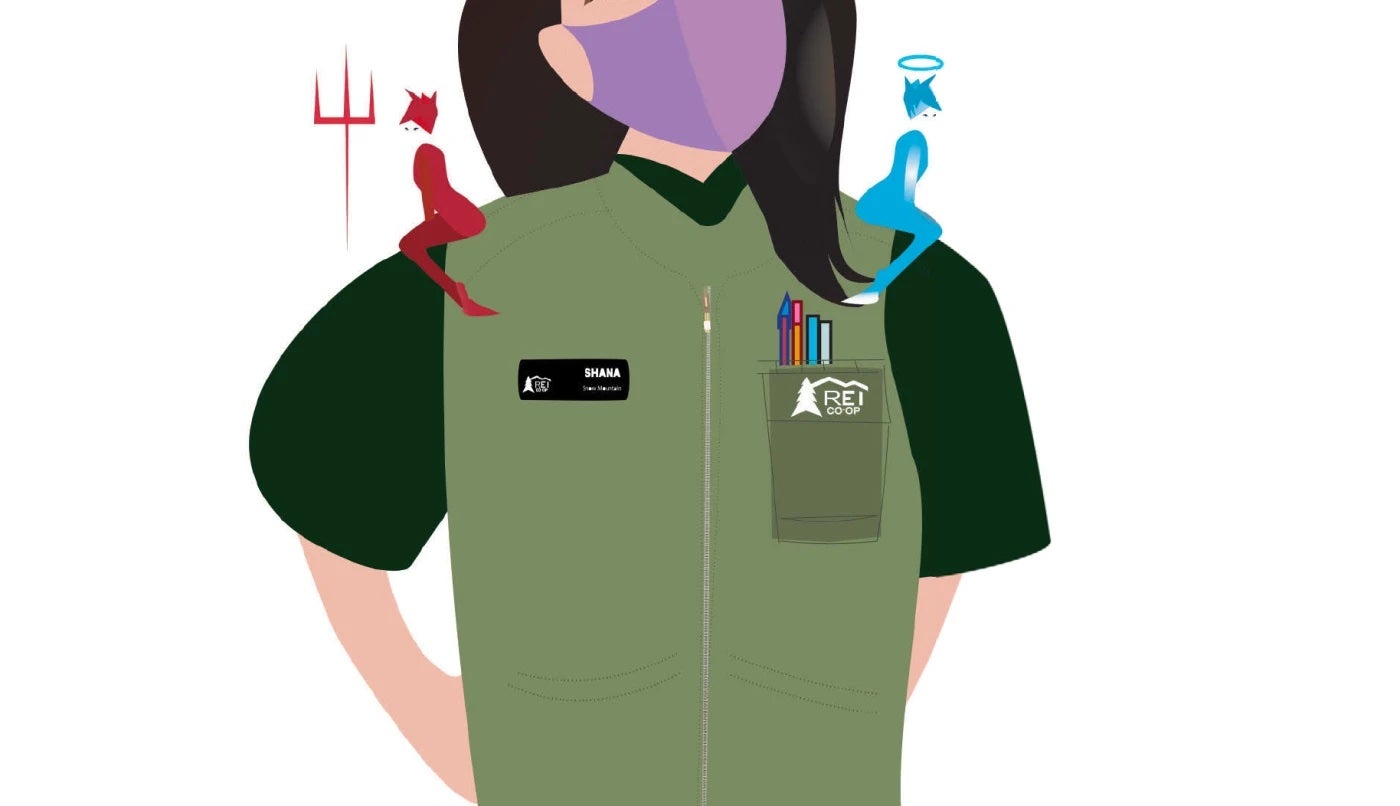Has REI Become Too Big For Its Own Good?

(Photo: Judith Rudd)
This excerpt comes to us from our sibling site SNEWS. Read the full story, which originally appeared in the Winter 2021 issue of The Voice, here.
In 1930s Seattle, ice axes, the kind you would climb Rainier with, were hard to come by, and expensive. Early ski shops sold knockoffs for $370 in today’s money. So Lloyd and Mary Anderson pooled some cash with a group of climbing friends and used that collective buying power to source finer Austrian axes for an inflation-adjusted $65. There were no retail middlemen. Just like a local farm co-op today, those first co-op members were buying goods at just above wholesale.
As origin stories go, the ice axe has staying power. Even after many decades of REI selling all manner of recreation equipment for pretty much the same retail price as the rest of the outdoor industry, the mystique of the co-op persists. Consumers see value in it.
Today, thanks in large part to its 19 million members, REI is a $3 billion business with 168 stores. It has a similarly grand mission, built around outdoor inclusivity, the protection of public lands, fair treatment of employees, and, increasingly, vendor accountability and sustainability. All of which earn REI well-deserved kudos.
There’s fallout when a business cloaks itself in its own mythology, however. If REI’s climbing-obsessed founders were around today and found themselves in need of an ice axe, they almost certainly wouldn’t walk into an REI to buy one. The box-store feel just doesn’t resonate with core enthusiasts. And besides, REI long ago realized that large-scale success hinged not on serving the most passionate, but rather the most numerous—the masses of outdoor dabblers.
Ironically, that strategy has chipped away at the image behind the ice axe story. Despite REI’s 2019 store opening in North Conway, New Hampshire, local heritage climbing and outdoor shop IME (International Mountain Equipment) is confident that its business will survive as it has since 1974. IME’s future rests in part with the idea that no self-respecting ice climber would buy ice tools from REI. If REI stays in its lane servicing tourists and newbies with its “experiential” shop, so the theory goes, IME will be fine. Other specialty shops across the country hope for the same.
It’s as welcoming as a theme park, but as a business, as a voice, as a consumer experience, as a portal to the outdoors, as a vehicle for the industry to peddle its wares, REI is milquetoast. It doesn’t sell much in the way of high-end gear to elite adventurers, nor, to its credit, does it sell much in the way of shoddy detritus to the bargain-basement crowd. REI does a lot of public good, but never at the risk of offending the public. The shops’ “Green Vests” are often indefatigably friendly, but true expertise—the kind that frequently comes along with sharp-edged personalities—is just as often scarce. If the outdoor industry were a triangle, REI would own the middle 60 percent—as an executive confirmed with me. If REI were a square, it would be blue—the skier’s shape and shade of terminal intermediacy.
In normal times, that warm and fuzzy positioning is either spot-on or total blasphemy, depending on your worldview as a consumer, competitor, vendor, or activist. But these aren’t normal times. The country is suffering through the largest public health crisis and economic threat in a century. How REI weathers the day—and adapts for the future—matters. REI is the single biggest force in the outdoor industry, with the economic health of a thousand vendors and 13,000 REI employees depending on its vigor. As the fallout from 2020 continues to be calculated, it’s high time to reflect on the company and ponder what it is and what it will become.
This is especially true now, as mutterings of REI’s decline— among both vendors and independent retailers—coincide with a ramp-up in competition. Amazon thrives when people stay at home; smaller online outlets have been booming of late; and in December, Dick’s Sporting Goods announced that it’s launching a chain
of outdoor shops. And while the rumors of REI’s 2020 struggles are almost certainly overblown, what is indisputable is that the times will fundamentally shift what, when, where, and how consumers buy. As vibrant as REI’s business was in 2019, a record breaker for the company, it isn’t above this societal inflection point. Unlike in banking or the automotive industry, in retail, you’re never too big to fail.
Which begs another question. Is REI simply too big for its britches? Meaning, has the company’s hubris alienated the outdoor industry from which it sprung, and put its future at risk?
Keep reading on SNEWS